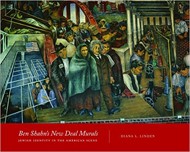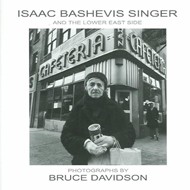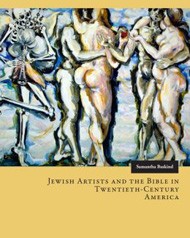Missing from the title and subtitle is the main thrust of the essays of this magnificently illustrated book about the key figures in the blazing art world of post World War II New York: the essays deal with how the two art critics, Clement Greenberg and Harold Rosenberg, dominated the scene with their perspectives on the importance and meaning of the paintings of Jackson Pollack and Willem de Kooning. The two critics were known as leading intellectuals of the 1930’s when they turned their attention to the art scene, each championing his choice abstract expressionist: Greenberg idolizing Pollack and Rosenberg revering de Kooning. Through their writings they influenced the public’s acceptance of the avant-garde as well as the idea that New York had replaced Paris as the world center of art.
Each promoted the standards by which the art would be judged, even inventing the terminology with which expressionist paintings would be described. Greenberg stood by formal criteria of form and content, favoring abstraction while Rosenberg considered the act of painting an “event” whereby the gesture — action — dominates the effect.
The exhibition which occasioned this book is a kind of retrospective — the essayists don’t interpret or evaluate the art — rather they have mined the vast historical record— and it is vast — to present the art movement, Abstract Expressionism, in terms of specific social, political and literary forces at work during that period. Norman Kleeblatt, editor of the volume and senior curator of the exhibitions, contributes the major essay discussing each of the artists and the paintings reproduced in the book, including Kenneth Noland, Barnett Newman, Jasper Johns, Mark Rothko, Morris Louis, Helen Frankenthaler, Lee Krasner, Philip Guston, and Jules Olitski, as well as Pollack, de Kooning, and others.
The fact that both Greenberg and Rosenberg were Jews (along with a number of the artists) wasn’t considered relevant to their art criticism. Only in the essays by Mark Godfrey and Morris Dickstein is the matter discussed and they are noteworthy for the insight into the period of the great influence of Jewish intellectuals, with Greenberg editing the Partisan Review, a prestigious journal of ideas, and Rosenberg becoming the art critic for the New Yorker. Even earlier, they had each contributed articles to Commentary and its precursor Contemporary Jewish Record. Each had expounded on the subject of Jewish identity in their writings but only rarely addressed it in relation to their art criticism, Rosenberg’s lecture on “Is there a Jewish Art” given at the Jewish Museum, and later published in Commentary, notwithstanding.
The essays address different aspects of the history of Abstract Art and the “Berg Boys,” each lucidly informative and accompanied by illustrations. It is a weighty book, solidly worthwhile. Bibliography and notes.

Visual Arts
Action/Abstraction: Pollack, De Kooning, and American Art, 1950 – 1976
- Review
By
– November 10, 2011
Esther Nussbaum, the head librarian of Ramaz Upper School for 30 years, is now education and special projects coordinator of the Halachic Organ Donor Society. A past editor of Jewish Book World, she continues to review for this and other publications.
Discussion Questions

Jewish literature inspires, enriches, and educates the community.
Help support the Jewish Book Council.


